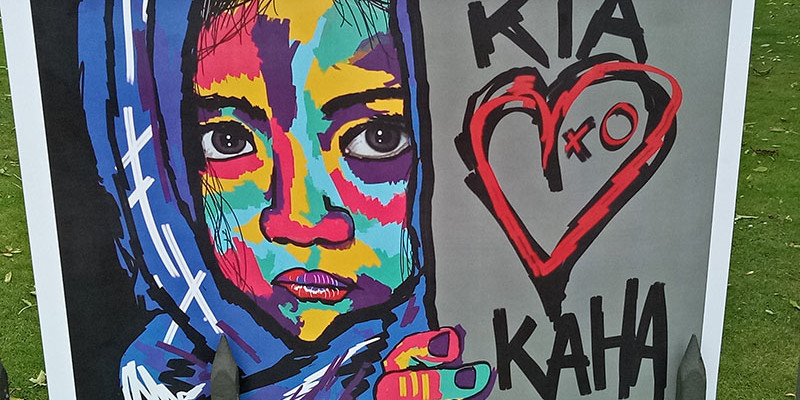
Aftermath of 15 March
The events in Christchurch on March 15 brought into relief a number of issues for senior leaders and teachers in their schools and communities.
Some considerations in the aftermath of the March 15 Christchurch terror attacks
PPTA has moved to model messages on the webpage (with tips, tools tricks, requests etc) so that in similar circumstances members affected access support material and messages when they are ready for them.
Having the president on the ground as quickly as possible after the incident helps in the organisation and support of members.
The Ministry of Education did a quite impressive job in their intervention model, which was not just to Christchurch but to schools beyond that (providing EAP release, being there in numbers and a good engagement model.)
It is not helpful however, for the emergency response to tip quickly into a bureaucratic recovery model.
The MOE has announced a formal review of lockdown procedures. The survey will get to other schools in Canterbury in first instance and maybe then the rest of the country. If the result is guidance on how to set, implement and monitor your lockdowns that would be useful; or if resources and support are provided as a result but it will be less useful if it’s a list of shall and shall not.
It is hard for families and teachers affected to respond to formal process in fixed time frames without re-victimising those involved. We need to be asking ‘do you need help?’, ‘do you need someone to talk to? ‘and gathering the information schools need over time.
Schools in Christchurch did it differently – they had a conversation as part of their debrief around the events. Ideally, the experience of those schools in lockdown might flow into other schools examining their own procedures.
Talking about staff wellbeing, internet, Health and Safety Act and the site and dealing with them coherently will give more sustainable outcomes than a top down review.
It is not satisfactory if you have lock down procedure only because you have to and these have not been developed with staff and tested with your community. Copy and paste does not work in every context. All responses have to be co-designed and well understood.
There is no checklist that guarantees the safety of teachers, students, community for every event and when stressed they unlikely to be helpful. But core precepts are guidance from MOE, with support structure and resources in order for schools to meet obligation around policy and process. Engagement and decision making at school level is best because you know the site and your community – designing bespoke solutions. Knee-jerk responses can have unintended consequences. Far better for principals to engage with staff to ensure that their processes are up to date, effective and well understood.
Some lessons
Police advised that if teachers have a cellphone each it would facilitate communications in a lockdown – but that would require the schools to make them mandatory and this means costs to schools.
Schools generally have not considered that a lockdown might go past 3.20pm.
One school had an external review of its practices and used two separate assemblies to inform students of the findings. A 15 minute practice lockdown was successful in revealing problems:
- After 10 minutes of quiet, lying down and lights off the SLT missed 3 classes when they were giving the all clear.
- They couldn’t just announce the all clear –but to email it out meant all teachers would need access to laptops.
- They realised that the plan to have assembly after lockdown on the field was heavily weather-reliant.
- An email alert starts with principal – but if the principal is not there?
- When do you release students if you don’t get the notification?
- If parents are notified by text and can’t collect their children then who is going to deal with inflow of texts and who ensures a channel is kept open?
- Flexible learning spaces create particular concerns about what best practice is when students are more exposed and less able to be locked down than in traditional spaces.
- One school’s experience of a 2 hour lockdown was that the first hour went smoothly but then all the boys were using social media to send messages to parents and friends. The school emailed teachers asking them to stop students from texting home. Teachers need to talk to students beforehand about sensible behaviour in a lockdown. One school requires that the moment they go into lockdown teachers must collect the cellphones.
- The problem of the wharepaku–if under direct threat then maybe you just use the corner of the room – but what if it is a mixed class?
- What do you do when you find a student circulating hate material in your own school? There is no advice from the MoE about that but schools have an ethical and legal obligation to report this.
An alternative view from a school that has done a lot of work meeting with police and armed offenders is that scenarios are so varied no one process can cover them all and common sense has to operate; do the right thing until police get there and take over.
Police say make sure everyone knows the process but don’t do a practice because you might be doing the wrong thing or notifying a person what the processes are – most attacks overseas are internal – offenders set off emergency alarms knowing then what paths people will be following and where to strike.
Resources
How parents and teachers can respond to the shooting (ppta.org.nz)
How to support New Zealand's Muslim communities (spinoff.co.nz)
